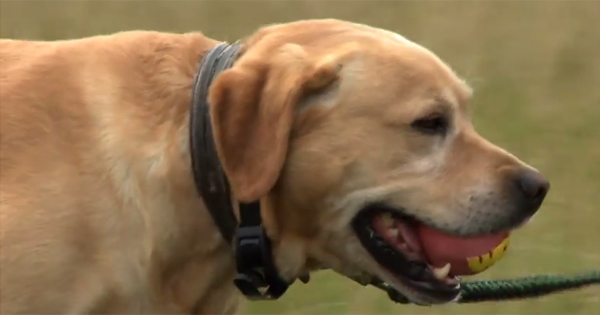A new study from the University of Lincoln in the U.K. found that electronic collars can cause distress to dogs — especially when used at high settings.
Electronic dog collars were originally introduced in the late 1960s to train hunting dogs, and a few years later were sold at pet supply shops. The idea behind electronic collars, also called e-collars, remote training collars, zap collars, and shock collars, was to teach canines obedience and tricks by using electrical shocks to monitor their behavior.
Animal behaviorists at the University of Lincoln found the dogs in their study (“The Welfare Consequences and Efficacy of Training Pet Dogs with Remote Electronic Training Collars in Comparison to Reward Based Training”) fared better with positive reward-based training, and using shock collars caused stress in most of their subjects. Researchers published their findings in the peer-reviewed scientific journal PLOS One.
For a long time, there have been arguments both for and against the use of shock collars. Some dog trainers use shock collars, while many choose positive reinforcement. Many animal advocacy groups have come out against the use of shock collars.
The study involved 63 pet dogs, and the dogs were put into three different groups — one used e-collars and two were controlled groups without electronic collars. According to the study, “dogs trained with e-collars showed behavioral changes that were consistent with a negative response. These included showing more signs of tension, more yawning, and less time engaged in environmental interaction than the control dogs.”
The study also showed there is “no consistent benefit to be gained from e-collar training.”
Jonathan Cooper, lead author of the study and professor of Animal Behaviour and Welfare at the University of Lincoln’s School of Life Sciences, told Science Daily, “E-collar training did not result in a substantially superior response to training in comparison to similarly experienced trainers who do not use e-collars to improve recall and control chasing behavior. Accordingly, it seems that the routine use of e-collars even in accordance with best practice, as suggested by collar manufacturers, presents a risk to the well-being of pet dogs.”
Cooper plans on performing a study on “invisible fences” for cats and different ways to contain felines so they don’t stray from their property.
Sources: Science Daily, University of Lincoln, PLOS One, YouTube









